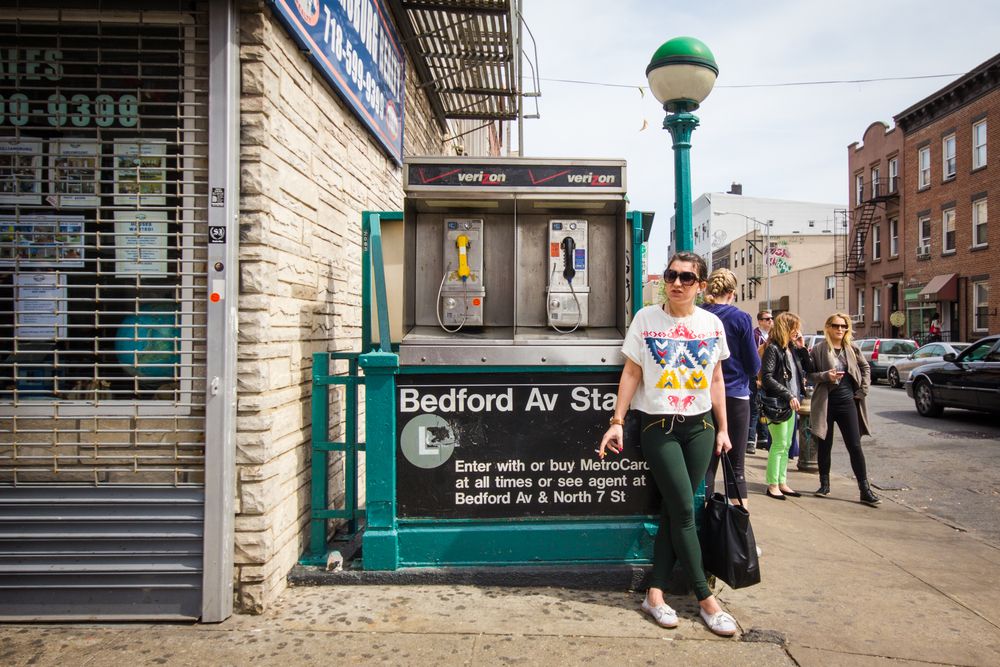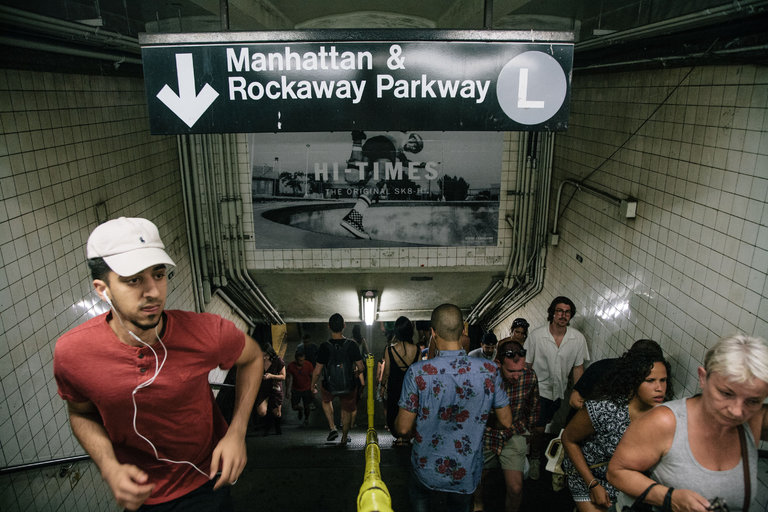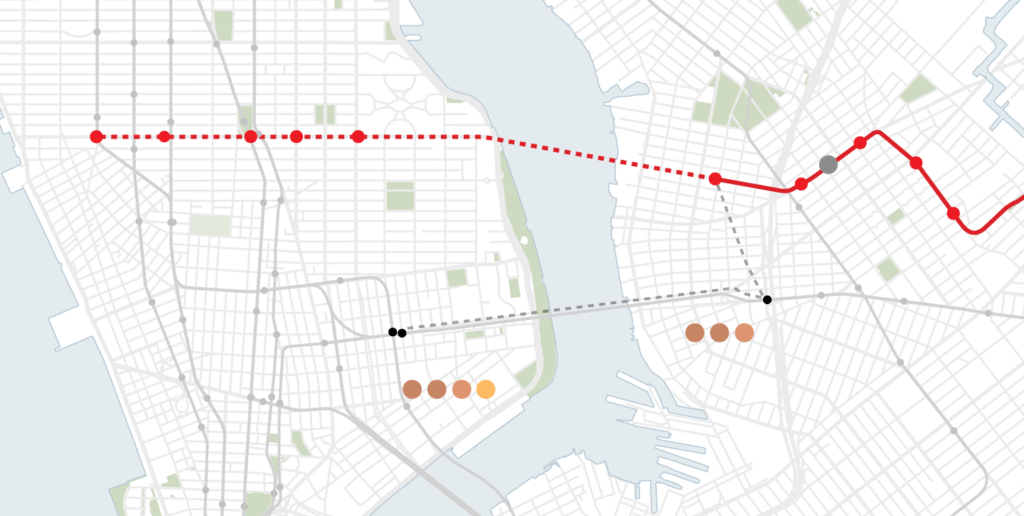
Emma G. Fitzsimmons of the NY Times reported on the Metropolitan Transportation Authority’s decision to stop L-Train service for 18 months versus the originally planned 3 years. In the NY Times story, Emma reveals additional updates.
You can read the original story after the jump or click here to read it on NY Times. Keep reading to find additional transportation alternatives that won’t be as much of an inconvenience of getting stuck in traffic in an Uber or taxi and still good for the environment.
——

The Metropolitan Transportation Authority plans to close a tunnel that carries the L train, one of New York City’s most crowded subway lines, creating what officials acknowledge will be among the largest disruptions in the transit system’s history.
The decision, which officials announced on Monday, has been awaited for months by riders concerned about the tunnel’s fate. Now, they have their answer: The tunnel, which runs under the East River between Manhattan and Brooklyn, will be shut entirely for a year and a half, starting in January 2019, to repair serious damage caused by Hurricane Sandy.
The move promises to upend the commutes of tens of thousands of people along the popular line who will have to find other ways into and out of Manhattan.
After considering two proposals for shutting down the L tunnel, the authority decided on the 18-month closing instead of a partial three-year shutdown that would have allowed some trains to continue running.
Officials hope to complete the repairs as quickly as possible to limit the impact on riders, said Veronique Hakim, president of New York City Transit, the agency that runs the city’s subways and buses and is part of the authority.
“It really came down to our wanting to pick an option that minimized inconvenience to the customer,” Ms. Hakim said in an interview on Friday at the authority’s headquarters in Lower Manhattan.
She said she planned to discuss the decision at an authority board committee meeting on Monday.
“This is the, ‘Get in, get done, get out,’ option,” she said.

Still, the plan will result in key parts of one of the city’s most congested subway lines being closed at a time when ridership across the system is surging, prompting widespread complaints of oppressively packed cars.
L trains will continue to operate in Brooklyn between the Williamsburg and Canarsie neighborhoods, but will not run between the Eighth Avenue stop in Manhattan and the Bedford Avenue station in Brooklyn. All five L train stops in Manhattan will close, along with the tunnel. About 225,000 riders now take the L train across the East River each day.
On Monday morning, New York City’s first deputy mayor, Anthony Shorris, said the city was concerned that the state-run authority had not yet provided details on alternate service plans for L train riders.
“While we recognize the need for the M.T.A. to perform these important repairs and upgrades, we are deeply concerned that it would announce an 18-month shutdown of this critical service without a clear plan or a commitment of resources for mitigating the impact of this closure on hundreds of thousands of New Yorkers,” Mr. Shorris said in a statement. “Well before this shutdown occurs, New Yorkers deserve clarity from the M.T.A. on how it intends to minimize inconvenience and keep people moving throughout the duration of the construction.”
With a long-term closing of the tunnel all but certain, elected officials have focused on alternate travel options to accommodate as many people as possible. The authority is considering several plans, including extra subway service on nearby lines and a new bus and ferry service. Cars could be added to trains on the G line, which is known for having short trains that riders must scramble to board.
No matter what contingency plans are created, it is clear that travel will become more difficult and consume more time when the tunnel closes.
Even in a booming subway system, the L train is famously cramped. Since a rezoning of Williamsburg in 2005, residential buildings have spread across the neighborhood, and their occupants have grumbled about crowded subway platforms and frequent delays.
As if on cue, there were delays on the L train between Manhattan and Brooklyn on Monday morning because of a police investigation at the First Avenue station.
Since the initial plans for shutting down the L came to light about six months ago, the authority has held a series of public meetings to explain why the move was necessary and to elicit feedback on the two proposals. From early on, authority officials appeared to favor the 18-month shutdown over closing one of the tunnel’s two tubes at a time over three years, which would have reduced service by 80 percent.
As riders learned more about the two options, many expressed a desire that the repairs be done as quickly as possible. A survey by the Riders Alliance, a transit advocacy group, found that 77 percent of those who responded preferred the 18-month closing.
The L train tunnel, officially known as the Canarsie tube, was one of several subway tunnels swamped by Hurricane Sandy in 2012. Authority officials have said the tunnel is safe, but that it requires major work to fix crumbling walls and to repair tracks and cables. The tunnel repairs and improvements to stations on the line could cost $800 million, with the federal government expected to finance a large portion of it, officials said.
The authority has already rehabilitated several flooded subway tunnels, including the Montague tunnel, which carries the N and R trains between Manhattan and Brooklyn. Those repairs took about 13 months, but riders had the option to use several other lines. The L line is the only convenient subway route in certain neighborhoods.
Earlier this year, Thomas F. Prendergast, the authority’s chairman, told reporters that Hurricane Sandy had been the worst storm to hit the system. The L train repairs, he said, were “by far, the most impactful capital construction project we have had to ever do on the system.”
Carlo A. Scissura, the president of the Brooklyn Chamber of Commerce, said he supported the authority’s decision, but that it would be a “very, very tough 18 months” for riders and businesses who rely on the line.
“It’s more pain in a shorter period of time,” he said of the decision. “Really, what I’m looking for now is — the decision has been made, we need to focus on how we’re going to move people during this period.”
——
While there isn’t a perfect solution, there are transportation alternatives and resources that Greenpointers and Williamsburg residents can consider:
- Citi Bikes: Citi Bike is the nation’s largest bike share program, with 8,000 bikes and 500 stations across Manhattan, Brooklyn, Queens and Jersey City. It was designed for quick trips with convenience in mind, and it’s a fun and affordable way to get around town.
- Greenpoint Bikes: This bike shop is located on 1078 Manhattan Ave in Greenpoint. They sell and rent bikes for those who would prefer biking over waiting for a crowded train.
- Brooklyn Peddler: Another bike shop alternative located in Williamsburg on 636 Lorimer Street, between Skillman and Jackson.
- G Train/Shuttle Buses: According to several reports, the G Train will have extra cars to accommodate commuters from the Williamsburg area, and there will be shuttle buses to transport people to the city.
- Transportation Alternatives: Transportation Alternatives’ mission is to reclaim New York City’s streets from the automobile and to promote bicycling, walking, public transit. With 100,000 active supporters and a committee of activists working locally in every borough, T.A. fights for the installation of infrastructure improvements that reduce speeding and traffic crashes, save lives and improve everyday transportation for all New Yorkers.
- Rider’s Alliance: The Riders Alliance fights for reliable, affordable, world-class public transit in order to build a more just and sustainable New York. We organize subway and bus riders to develop grassroots power across racial, economic and neighborhood lines. Together, we hold our elected officials accountable, engage the public, and take direct action to guarantee that riders have a powerful voice in the decisions that affect us.



